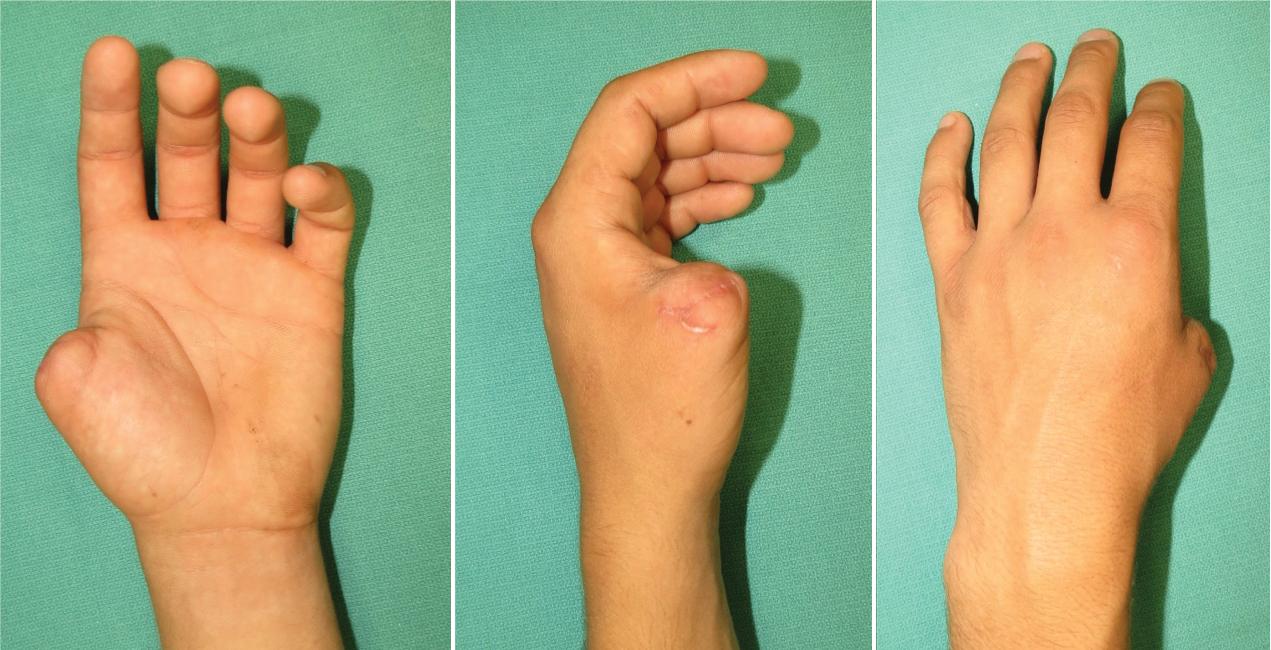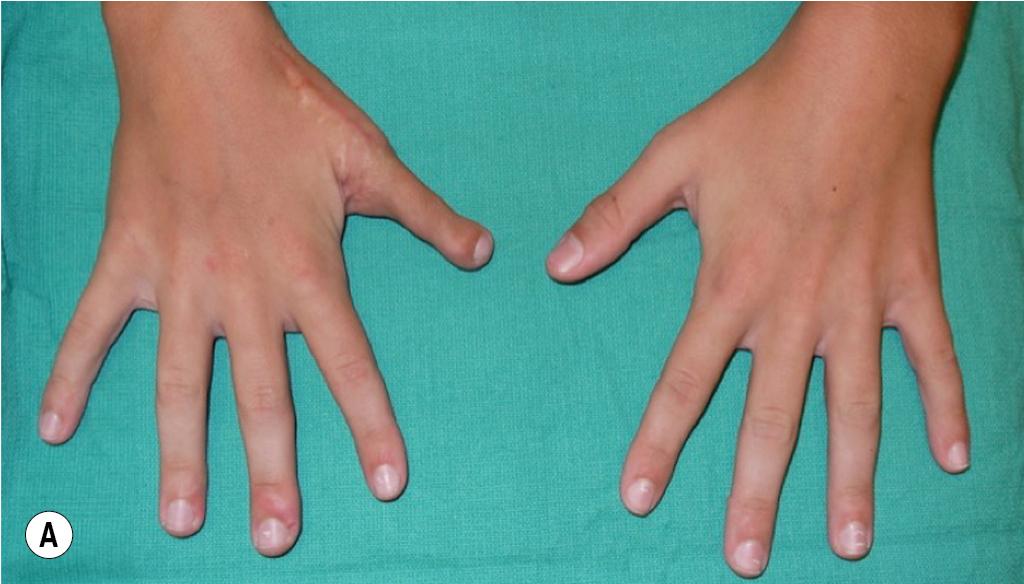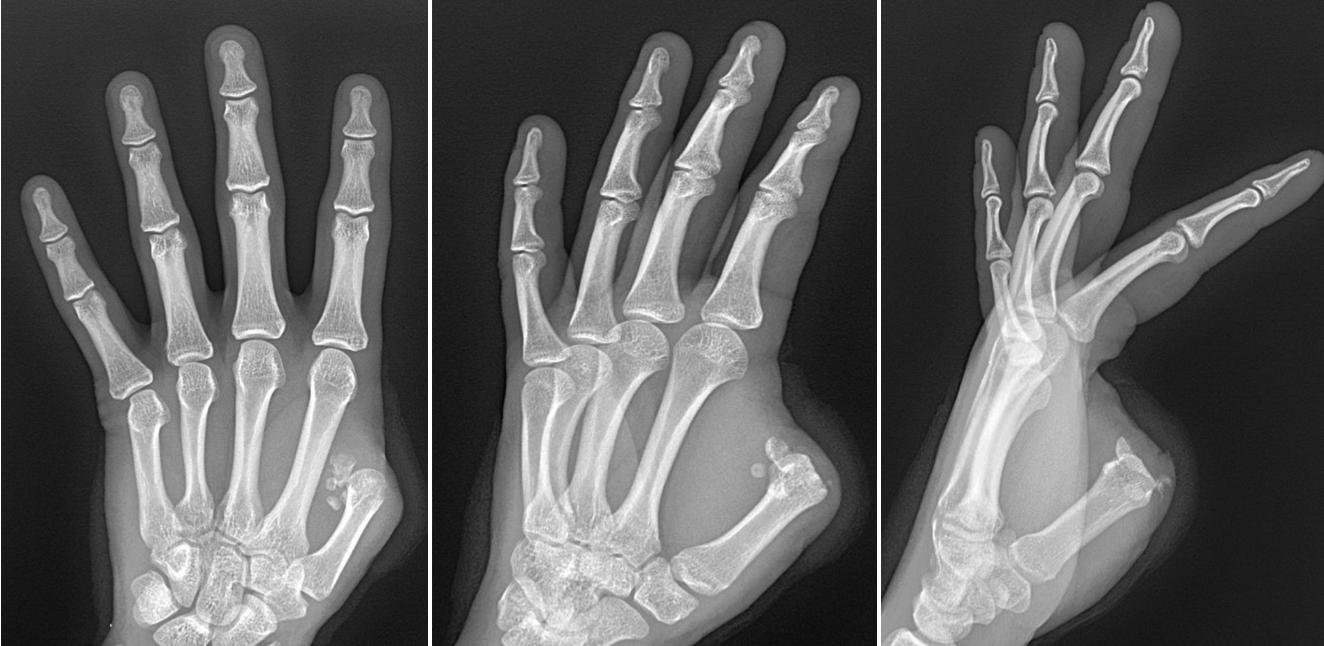Physical Address
304 North Cardinal St.
Dorchester Center, MA 02124
One indication is loss of the thumb because of a traumatic injury ( Fig. 95.1 ).
Although replantation of the amputated thumb is always considered first, there may be instances where the amputated digit is not viable or replantation is not possible. For these cases, toe to thumb transfer is an excellent option for replacing the lost digit.
Traumatic amputation at the level of the proximal phalanx is the optimal indication because this preserves the carpometacarpal (CMC) and metacarpophalangeal (MCP) joints.

Another indication is multiple finger amputations.
Toe transfer procedures can reconstruct the thumb and other amputated digits, restoring the essential tripod pinch function to the hand.
One final indication is a congenital thumb defect.
Constriction ring syndrome (CRS), which occurs when fibrous bands of the amniotic sac entangle fetal structures and restrict their growth, can cause congenital thumb defects. Unlike other congenital malformations, CRS typically presents with healthy joints, muscles, and tendons proximal to the defect site. Therefore CRS is an excellent indication for toe to thumb transfer.
It is crucial that patients understand the limits of reconstruction, the morbidity and aesthetic changes to the donor site, and the possibility that the surgery will be unsuccessful. The reconstructed thumb may not restore full function and range of motion (ROM) to the hand, and its appearance will differ from the opposite thumb. In addition, patients may have concerns that walking and exercise will be impaired postoperatively, despite evidence that demonstrates no significant difference in postoperative function of the foot.
For traumatic digit amputations, we recommend delayed transfer in all cases to permit optimal healing of soft tissue. This also gives the patient time to psychologically prepare for the procedure, recognize the functional deficit, and comprehend the need for the procedure. Finally, the patient must be motivated to comply with the rigorous rehabilitation that will be necessary for a successful postoperative outcome.
The procedure should not be performed in children younger than 2 years old, because the small caliber of the blood vessels will preclude microvascular anastomosis.
Other contraindications include vascular disease, lack of compliance with smoking cessation and postoperative care, and any previous injuries of the foot that hinder toe harvest.
If reconstruction of the amputated thumb is still desired after replantation is deemed not feasible, it is best to preserve as much length as possible of the remaining bone, tendons, and neurovascular structures. This will facilitate reconstructive procedures such as toe to thumb transfer.
Children with unilateral thumb malformations can be treated as early as 2 years of age. Early treatment will avoid the development of adaptive behaviors, such as decreasing the use of the abnormal hand.
Preoperative and postoperative photographs that demonstrate the results of toe to thumb transfer and the typical appearance of the donor site defect ( Fig. 95.2A–B ) can facilitate patient understanding and expectations for the procedure.

We advocate the use of the second toe for thumb reconstruction because the donor site deformity is minimal. Harvesting the big toe will cause substantial damage to the appearance of the foot, as well as problems with push off, despite preservation of the big toe head of the metatarsal.
Examine the structures at the amputation level of the thumb and the patient’s remaining hand function. This assessment can inform whether the remaining tendons can still glide and permit flexion and extension of the digit. In addition, examine the surrounding soft tissue to anticipate whether the transferred toe will face challenges during healing.
Assess the patient’s expectation of how the procedure will restore function and their motivation to cooperate with the rehabilitation program.
The choice of the recipient vessel for anastomosis will either be the radial artery or the princeps pollicis, depending on the level of the amputation. Therefore it is critical to perform the Allen test during the clinical examination to verify that the ulnar artery alone can provide adequate perfusion to the hand once the radial artery or princeps pollicis anastomosis with the donor vessel is complete.
The thumb amputation site should be free of infection before toe to thumb transfer.
The critical consideration is whether there is enough soft tissue over the thumb to support the toe. One should not harvest too much soft tissue from the foot, which can cause wound complications. In certain situations, a groin flap is placed over the thumb as the first stage to add soft tissue that can be used to wrap around the toe to cover critical structures.
X-ray imaging can detect the remaining bone length of the thumb, the presence of additional bone defects, and the integrity of joints such as the interphalangeal (IP) joint and the MCP and CMC joints ( Fig. 95.3 ).

X-rays can also be performed on the toes that are planned for transfer. This can help rule out any comorbid conditions that may not be visible, including degeneration of the toe joint or bone lesions. Likewise, imaging can provide the length and diameter of each phalanx for surgical planning before transfer.
An angiogram is not recommended because it is often difficult to obtain high-quality images of distal tissues such as the thumb and toes. Instead, evaluation of the vessel distribution can be performed with a pencil Doppler and being familiar with the anatomic variations.
Become a Clinical Tree membership for Full access and enjoy Unlimited articles
If you are a member. Log in here